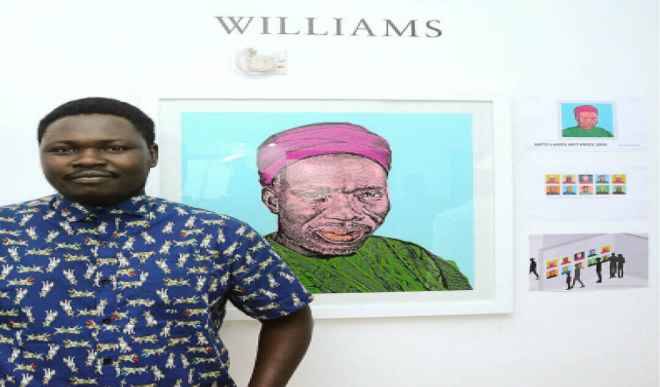How Tafawa Balewa piece made me Art X shortlistee
You were one of three artists shortlisted for the 2018 Art X Prize. How did this happen? I got to know about it online, because I follow Art X on Instagram. I saw the flyer and thought it wasn’t something I would be interested in. But people kept encouraging me in the comments section to […]


You were one of three artists shortlisted for the 2018 Art X Prize. How did this happen?
I got to know about it online, because I follow Art X on Instagram. I saw the flyer and thought it wasn’t something I would be interested in. But people kept encouraging me in the comments section to send an entry. Some friends also sent direct messages to me.
So, I decided to present an ongoing project at the time. In my proposal, I wrote that I am working on a series of silk-screen portraits of Sir Abubakar Tafawa Balewa, the first prime minister of Nigeria, using a photographic stencil of his portrait from the five naira bill I cropped out. Also, that the goal of the project is to document history in a contemporary way that will appeal to younger minds and educate them about Nigeria’s rich history. It would enlighten them, charges them to be bold and proud of their history and give them hope for a better Africa that strong minds can build.
The work was inspired by Sir Abubakar Tafawa Balewa’s Time Magazine cover of December 5, 1960 and Andy Warhol’s Mao Zedong series based on the subject of fame, using silkscreen printing. Andy Warhol featured cultural and leadership icons, including images of mass-produced consumer products, Hollywood stars and world leaders which were his most recognizable subjects. The influential pop artist made a cool, ironic light on the pervasiveness of commercial culture and contemporary celebrity worship. Early in his career, he began to utilize the silk-screen process to transfer photographic images to canvas. I used the same process, but with paper instead of canvas.
Balewa is the only Nigerian featured on the cover of Time Magazine. Knowing that Nigerian icons have been under-represented in spite of their great leadership and political achievements, I embarked on a mission to bring attention to them and immortalize them through my pop art.
How did you feel when you were shortlisted?
I was surprised, and at the same time not so surprised because I felt my work was interesting. But basically, I was happy and excited. I heard there were a lot of entries for the prize.
You are basically a mixed media and print artist. What was it like working on the Tafawa Balewa project?
My art is inspired by history. I love telling stories and educating people, especially the youths who may not be informed. I have noticed that a lot of schools aren’t taught History as a subject. When I was in secondary school, I had a choice to pick either Geography or History, and despite being a science student, I went for History.
Were you disappointed when you didn’t become the ultimate winner for the Art X Prize?
No, I wasn’t, because the initial idea wasn’t for my project to end with Art X. I would still have produced that particular piece. People were already interested in my work, even after the winner had been announced. I was just excited about what my work would become.
What would you say you have gained from being shortlisted for the prize?
Art X is a really big platform. It’s like the most popular art fair in West Africa and one of the most well known in Africa. It was an opportunity for the world to see my work. It’s an encouragement and makes me know that I am on the right path as an emerging artist.
Have you won any other prize before now?
The thing is, I have always avoided contests. I ignore them. But it’s different with Art X because I am kind of affiliated with them and was part of their live art show last year.
‘We Are the North’ is the only series you have done so far. Is there any other in the works?
I did a small series after that, called ‘Royal Niger Company’. I used popular faces on the naira, such as Sir Ahmadu Bello, the Sardauna of Sokoto, who is on the two hundred naira note, Alvan Ikoku on the ten naira, Dr. Nnamdi Azikiwe on the five hundred naira, and Sir Abubakar Tafawa Balewa on the five naira.
What are you working on at the moment?
I am working on a series, but it is at the idea stage and holding my next solo exhibition. It is mainly pop art, mixed media and probably some installations.
What is your long-term vision as an artist?
I would like to create signature pieces that will be well known around the world. Something you would see and say, this is Williams Chechet. I would also like to influence a lot of emerging artists. Also, get commissioned by big brands to design labels and so on.
